Zero-carbon cities, at the forefront of a vision to make Japan carbon neutral by 2050, are generating a wave of innovative changes across the country. Taking advantage of its geographical features, Goto City is looking to reduce carbon-dioxide emissions while revitalizing the community.
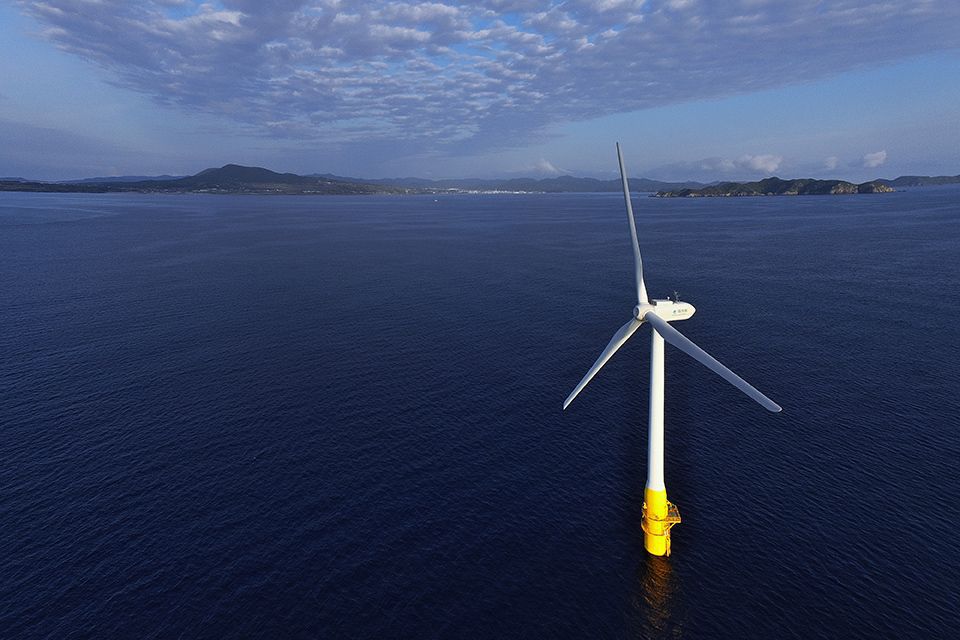
Hoichi Nishiyama
A floating offshore wind turbine off the coast of Goto City. Utilizing its favorable conditions—the strong winds that blow throughout the year and the waters’ depth—the city began Japan’s first demonstration project for such a turbine in 2010. It was also the earliest to operate the turbine commercially, starting in 2016.
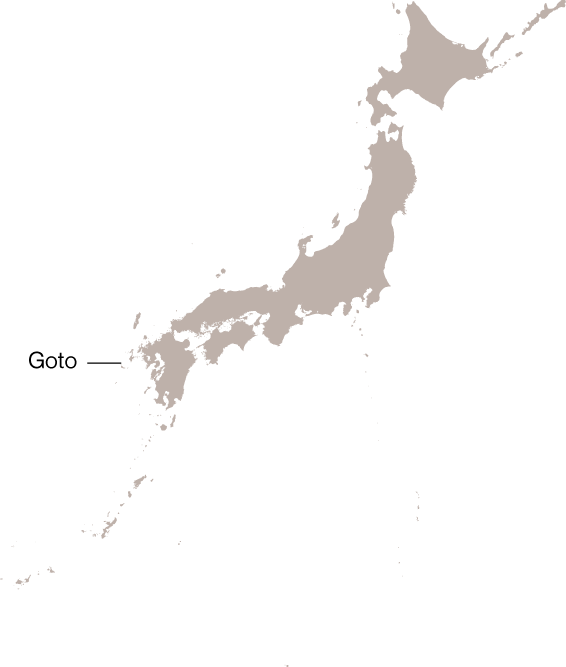
Every morning before going to work, the commuter looks at her smartphone to check the amount of charge left in her electric car. Everything in her home—from the air conditioning to the water heater—is optimally controlled by digital technology, reducing operating costs and making housework easier. She then leaves for her office, driving along the stunning coast while gazing at an offshore wind farm. Her office building, distinguished by a solar panel facade, gets all of its electricity from local renewable energy sources.
This is what the lives of the residents of Goto City, consisting of more than 150 islands in Nagasaki Prefecture, will be like in 2050.
Goto is one of Japan’s “zero-carbon cities” whose governments have declared that they will reduce their greenhouse gas emissions to net zero by 2050. The Japanese government, which aims for the entire country to achieve carbon neutrality by that year, is providing various types of assistance to zero-carbon cities, including planning, capacity building, and equipment installation. The number of local governments signing on to the initiative has been increasing rapidly—from four in September 2019 to 444 by August 2021—representing 111.4 million people, some 88% of Japan’s population. The aim is to trigger a “decarbonization domino effect” in which such local initiatives will catalyze similar efforts in their neighbors, leading to a nationwide movement toward carbon neutrality.
The way in which a particular municipality pursues the zero-carbon city initiative will be designed carefully to take advantage of its unique local characteristics. Goto City is surrounded by ocean and has strong offshore winds. These conditions made it ideal for the city to become the first in Japan to introduce a floating offshore wind energy system. While an offshore wind turbine is usually installed at sea by driving a monopile into the seabed, a floating wind turbine sits on the water, much like a vessel, and is moored by three chains. This makes it relatively easy to install and move, with a minor impact on the environment. Since the structure can be set up in deep-water locations, there is much anticipation regarding its introduction across parts of Asia that are surrounded by deep seas. Another key feature of the system is its resilience to typhoons. Even if tilted significantly by strong winds, it is designed to return to its original position. “Although Goto is said to lie directly in the path of typhoons, our floating system has yet to be damaged by one,” says MURAI Yasutaka, director of the city’s Renewable Energy Promotion Office.
The single floating wind turbine currently in operation in Goto has a maximum power output of 2,000 kW (equivalent to the annual power needs of 1,800 ordinary households). More than 51% of the city’s electricity is already produced by renewable energy sources, which include not only offshore wind power but also others such as solar power. The city plans to build the offshore wind farm by 2023 by expanding the number of floating wind turbines to about 10, which is estimated to result in over 80% of the city’s electricity demands being met by renewable sources.
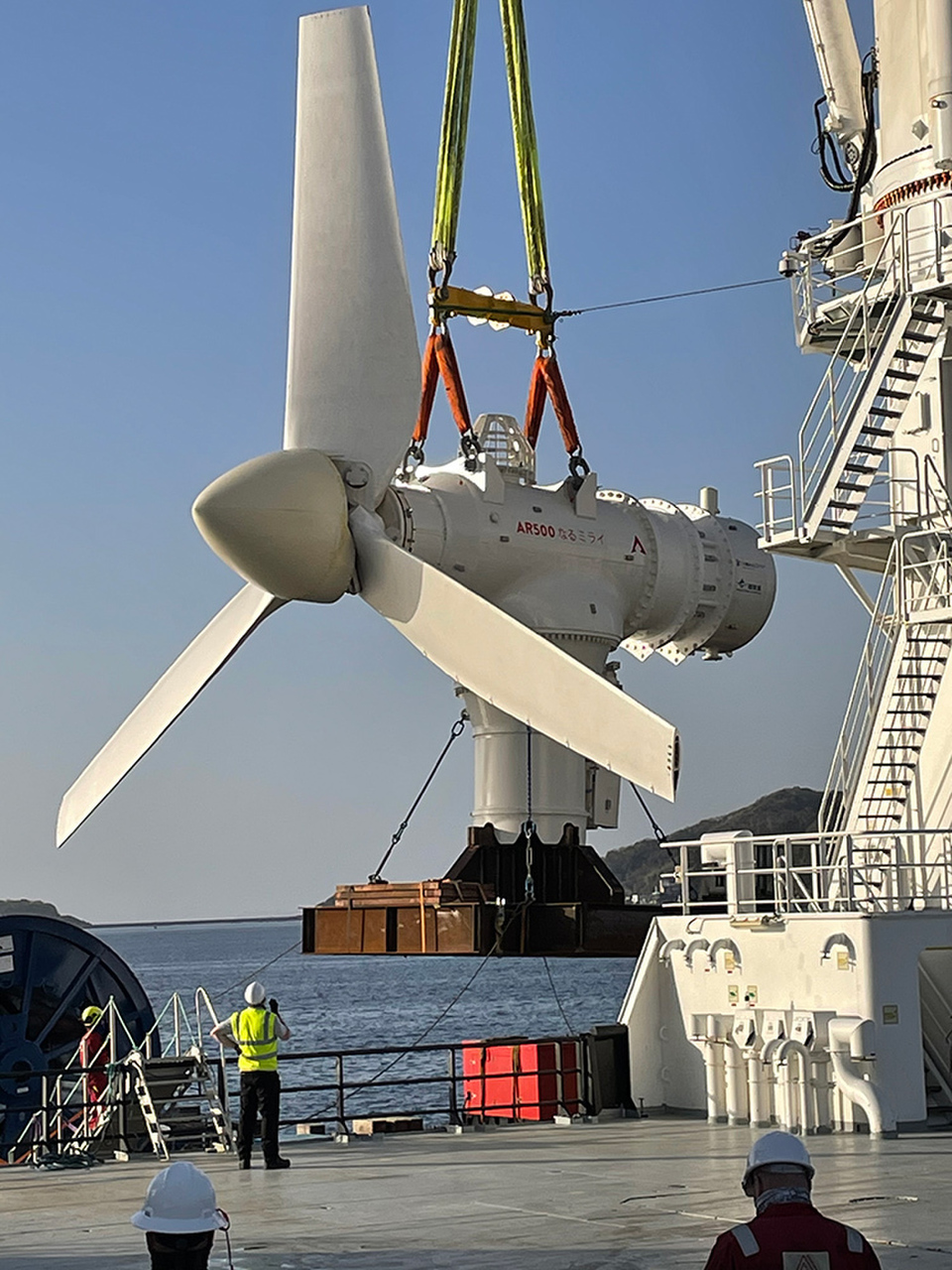
Kyuden Mirai Energy Co.,INC.
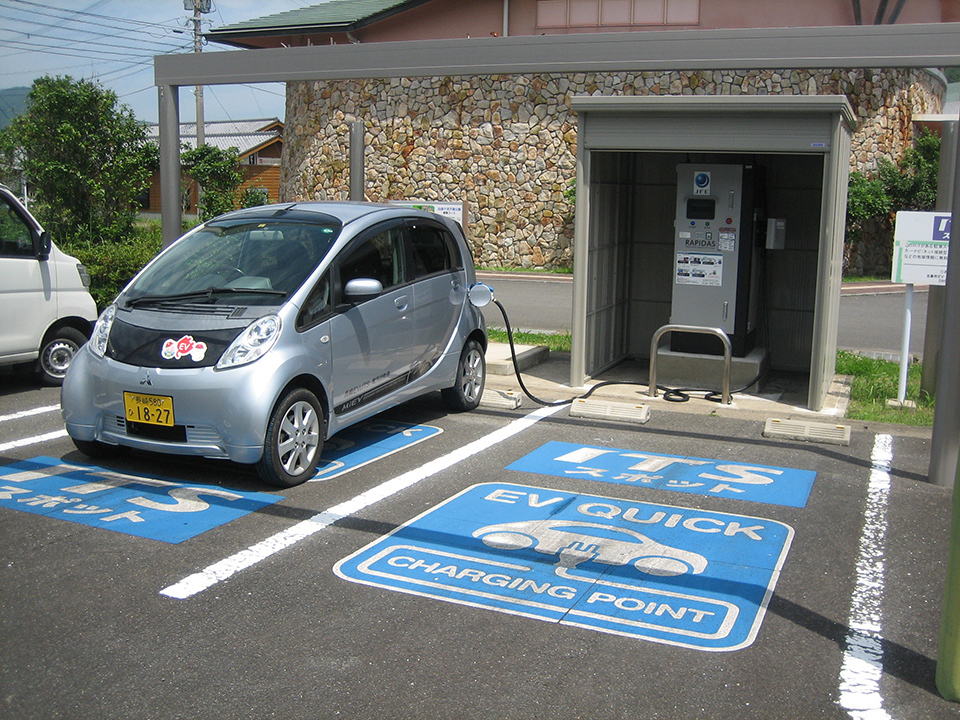
Top: The widespread use of electric vehicles is an inevitable step for Japan as it aims to decarbonize its automobile industry. Goto plans to introduce 200 such vehicles by 2030.
Left: A large tidal generator was installed in the offshore waters of Naru-Seto in January 2021. With an output of 500 kW, it generated about 80,000 kWh of electricity in some three months from the start of the experiment, equivalent to the monthly power consumption of 360 ordinary households.
The widespread use of electric vehicles is an inevitable step for Japan as it aims to decarbonize its automobile industry. Goto plans to introduce 200 such vehicles by 2030.
A large tidal generator was installed in the offshore waters of Naru-Seto in January 2021. With an output of 500 kW, it generated about 80,000 kWh of electricity in some three months from the start of the experiment, equivalent to the monthly power consumption of 360 ordinary households.
With the aim to decarbonize the entire region, Goto is also pioneering demonstration projects for tidal power generation and a hydrogen fuel cell ship. The city is also committed to raising the ecological awareness of its residents in order to promote the use of electric vehicles and reduce waste. These efforts have already brought about some positive results: renewable energy is often a topic when local issues are discussed in high school classes, and students have used drones to survey coastal marine litter.
Initiatives for carbon neutrality have already created new employment opportunities in the renewable energy field in Goto, invigorating the city. Recently, many people in their 20s and 30s have been moving to the city, resulting in a positive net migration rate for two consecutive years since 2019. “I want to make a community where each and every industry thrives, and where people will want to continue living, both for the job opportunities and for the sustainable environment,” says Murai. Utilizing local strengths and cutting-edge technologies to create societies that protect and nurture both the environment and people, zero-carbon cities are on the cusp of generating a wave of change across the country.
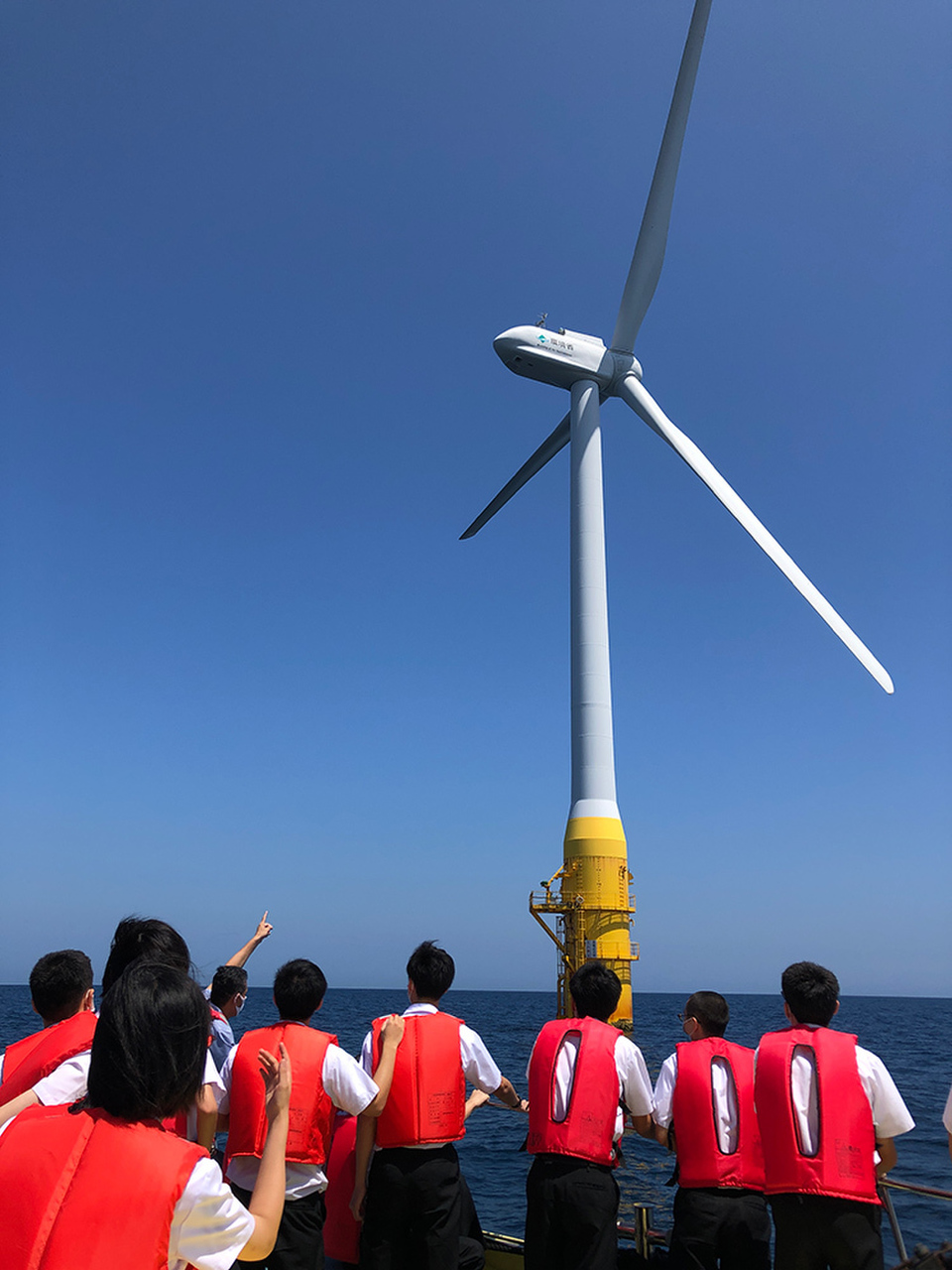
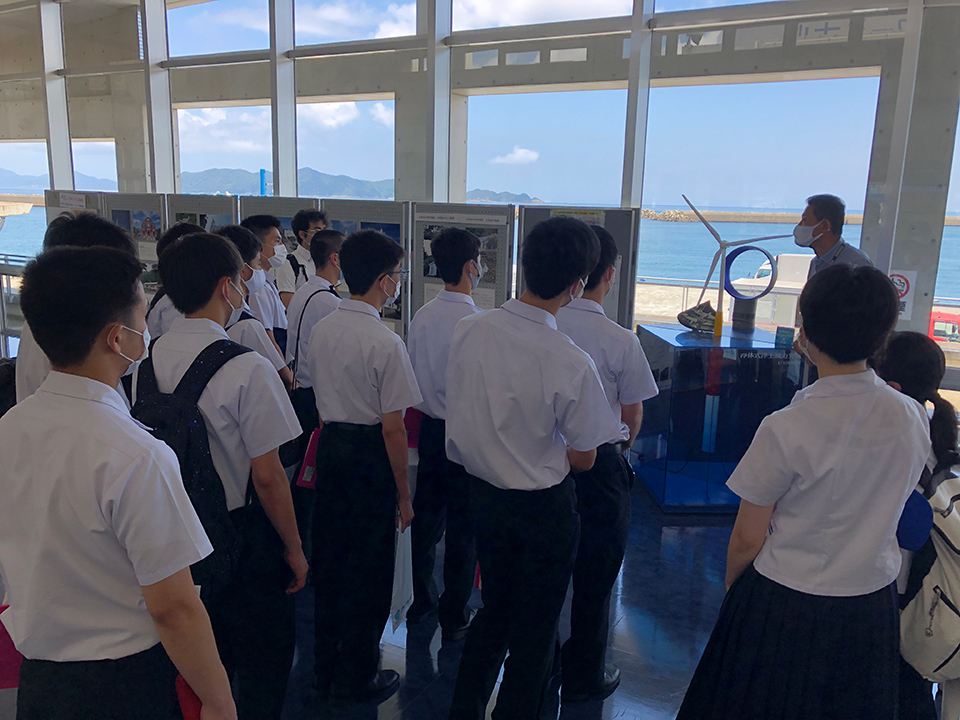
Goto regularly holds tours of the floating offshore wind turbine and seminars on renewable energy for students and the public, in an effort to raise awareness of the need to build sustainable communities that care for the environment.






























